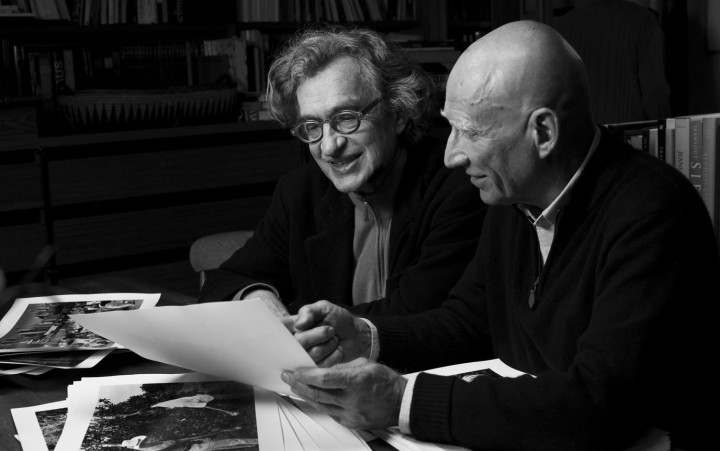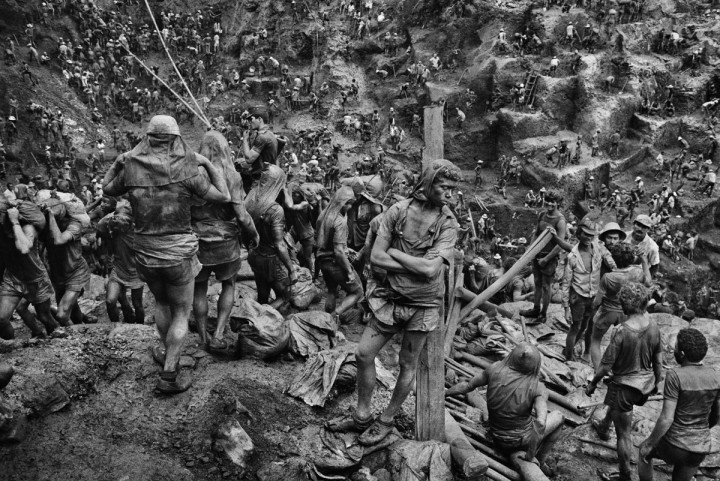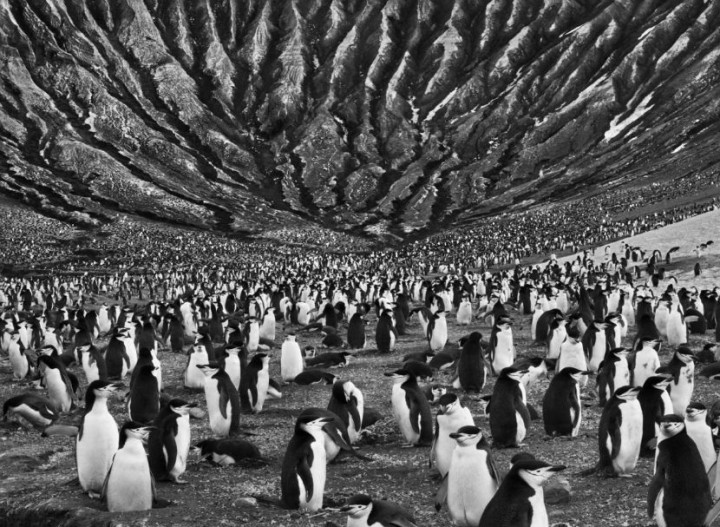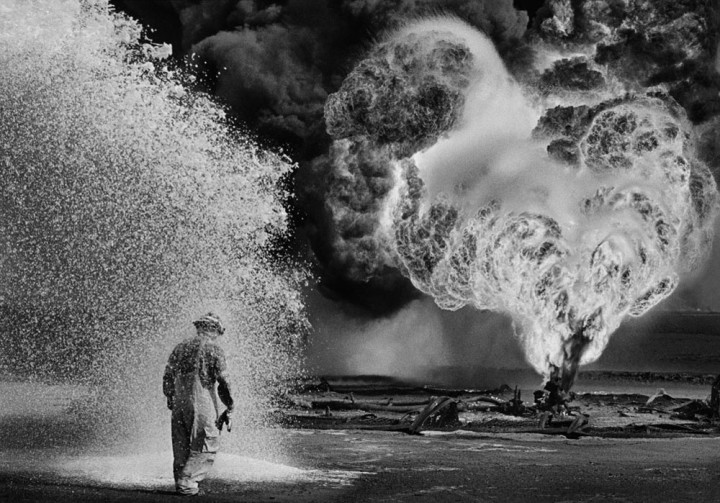I have only one serious reservation with The Salt of the Earth, and, no, it has nothing to do with addressing the question of the “morality” of photographer Sebastião Salgado’s work. I think the question of whether or not his photojournalism is playing on human suffering or is “grief porn” is ably answered by the film without any need for discussion. No, my problem is strictly one of style. When the film sticks to black and white — often producing shimmeringly silver, razor-sharp images almost the equal of Salgado’s still photographs — it is a beautifully immersive experience. It’s like seeing the world and the photographer’s life through the lens of his own camera. The moment it shifts to color it becomes just another documentary, not an experience at all. Fortunately, enough of the film sticks to black and white to keep it going along, but every time color intrudes, it becomes less than it was.
To touch briefly on that “grief porn” business, we know early on that co-director Wim Wenders doesn’t subscribe to it, since his initial response to seeing a Salgado photo was that it was taken by a “man who loves people.” The film — which is essentially a portrait of Sebastião Salgado by Wenders and Salgado’s son, Juliano Ribeiro Salgado — then spends most of its length demonstrating the correctness of Wenders’ judgment. It offers us a surprisingly complex picture of a man whose own soul becomes so overwhelmed by the suffering he’s seen and photographed that he can take no more and retreats into a very different world, which I’ll leave to the film to depict — along with the results of that retreat.
This is the story of a man who started out studying to be — and even working as — an economist and became a photographer entirely by happenstance — and at a fairly late time. There is never any question that Salgado is a born photographer. The images he produces are so startling and detailed and so right that you immediately know this wasn’t so much learned as it was a natural progression — even a kind of magic. It gave the already politically aware and socially conscious Salgado a voice to speak with — and with a clarity that goes beyond words. But if it all takes its toll on Salgado, it also takes its toll on the viewer. That’s to say that the film can be something of a downer. What rescues it from being singularly depressing is its last section — one that provides a sense of hope and rebirth to counter all the suffering or at least prove that there’s more to the world than the suffering.
Much of the film’s strength comes from Salgado’s photographs, which generously adorn the proceedings throughout. Wenders and the younger Salgado treat these photos with respect for their artistry. There are none of the attempts so beloved of modern documentaries to make the pictures other than they are. We have no panning across the images. There’s no lame attempt to convey a sense of movement. The photos are just there — seen as single, often very complex, images. The film allows the viewer to study them as if looking at them in a gallery — allows the photos to draw the viewer in without cinematically editorializing them. They are often breathtaking, often heartbreaking — and sometimes they’re both things at once. I have never seen a better film depicting imagery in this way. By all means, this is worth your while. Rated PG-13 for thematic material involving disturbing images of violence and human suffering and for nudity.








I was moved by the color footage of the walruses and the Papua New Guinea tribe.
The color footage just looked — as I said — like another documentary to me (and I’ve seen about enough for one year now). The black and white…was extraordinary.
I thought the mix helped with the somber subject matter.
Well, you’re allowed to think that.
Thanks for recommending this. I wouldn’t have even heard of the film otherwise. I saw it yesterday. I can’t remember any movie I’ve ever seen that combined such stunning human suffering with such stunning beauty–both aspects being profoundly moving.
Thank you for your very insightful review of this unique movie. I saw it in Mexico City while recovering from an illness, and it split my heart open. (I wear hard contact lenses and there was so much salt on them by the end of the movie that I had to wash them before I could leave the theater !)
I want to make sure that people know about this, and I’m so glad to have your review to share with others.